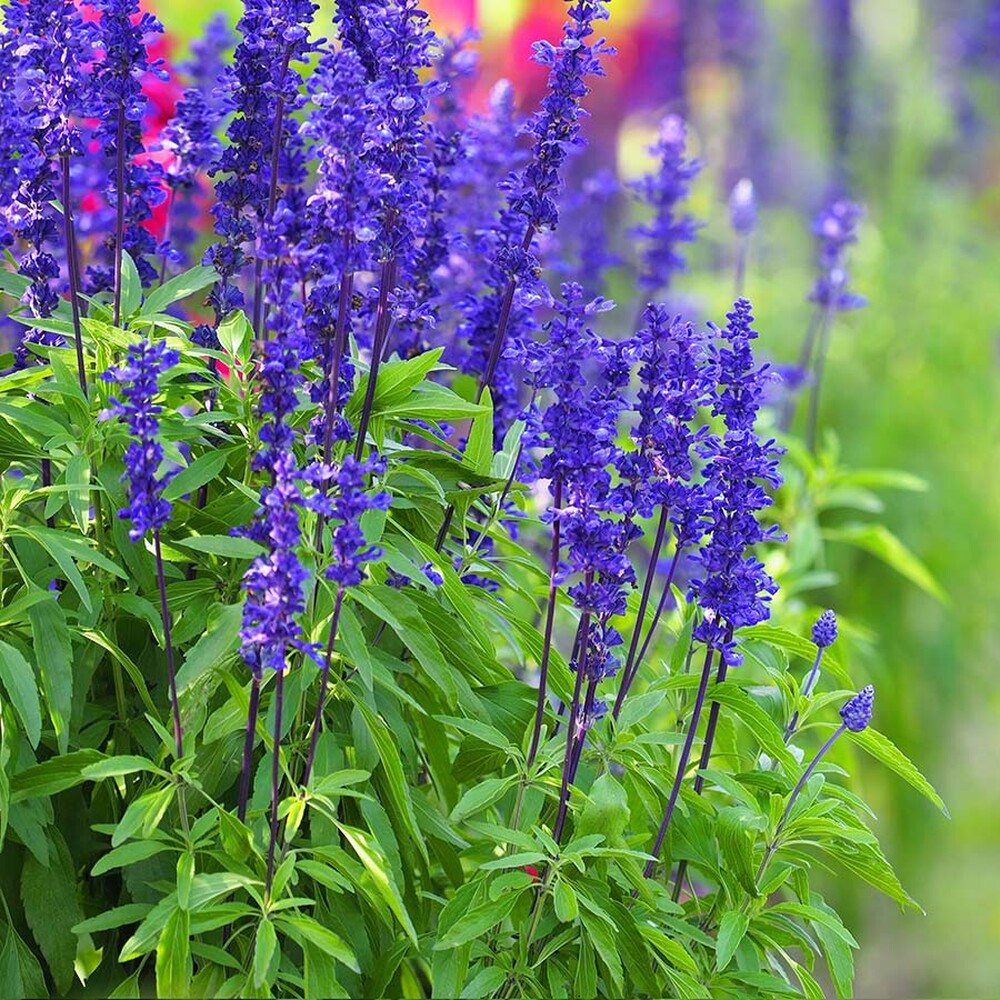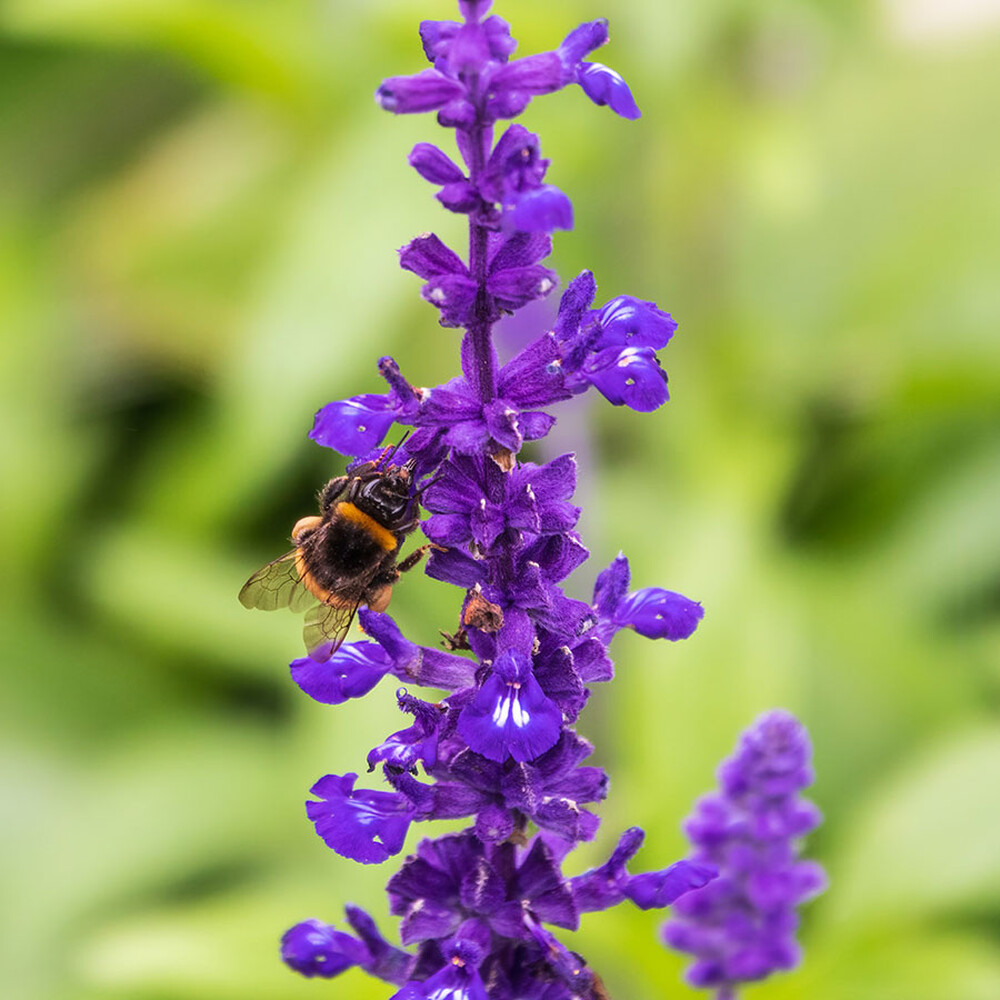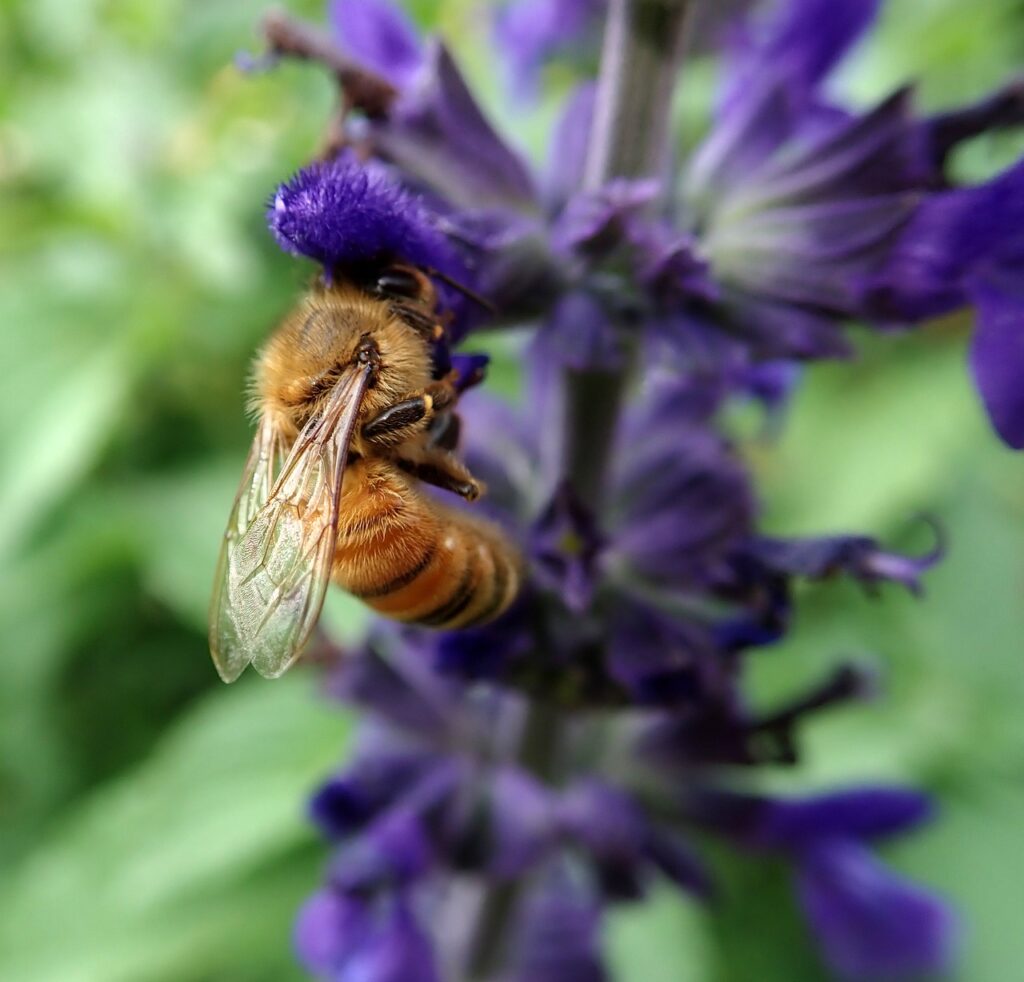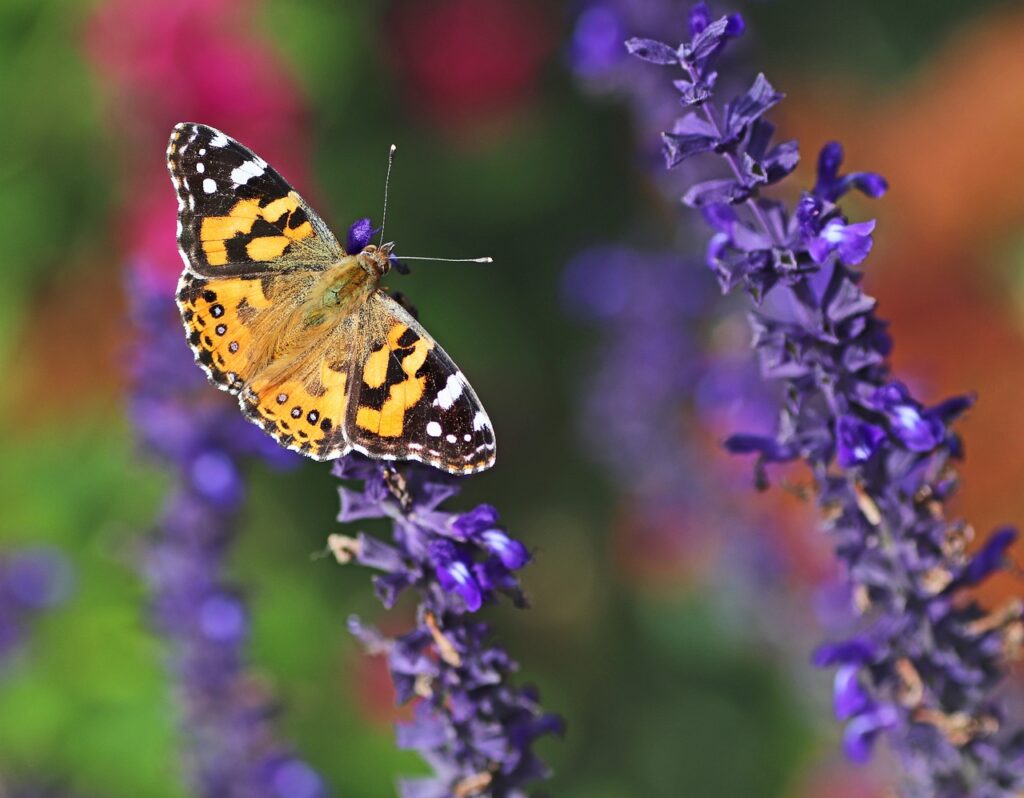Growing Blue Salvia, sometimes called Blue Sage, from seed is an easy and delightful way to add vibrant, drought-tolerant flowers to your garden.
These native North American plants are cherished for their striking blue blooms and low-maintenance nature.
Blue Salvia, scientifically known as Salvia farinacea, belongs to the mint family, Lamiaceae. It’s a hardy, herbaceous perennial known for its upright growth and striking blue flowers.
Blue Sage thrives in various climates and is well-suited for USDA hardiness zones 3-12. This resilient plant is typically grown in the spring and summer months.
In subtropical and tropical zones, it may bloom throughout the winter.
When to Start Blue Salvia from Seed

Knowing when to start salvia is half the battle.
In zones 3-5, begin Blue Sage seeds indoors 6-8 weeks before the last expected frost date, usually in early spring.
For zones 6-8, start indoor seeding 4-6 weeks prior to the last frost date.
In warmer regions (zones 9-12), you can sow seeds directly into the garden. However, we recommend starting blue sage in cell trays or soil blocks to better control the environment for a more successful germination.
Starting Blue Salvia Seeds Indoors

To start Blue Salvia seeds indoors, first select a well-draining seed starting mix to ensure healthy seedling development. You can purchase a commercial seed starting mix or make your own using two parts coconut coir and one part perlite.
Use seed trays or biodegradable pots for planting, as these can be directly placed in the garden to minimize transplant shock.
Sow Blue Sage seeds approximately 1/8 inch deep in the seed starting mix, gently pressing the soil over them to ensure good soil-to-seed contact.
Maintain consistent soil moisture, avoiding overwatering, and keep the temperature at 65-75°F for optimal germination.
The seedlings will require 12-14 hours of daily sunlight or fluorescent grow lights positioned 2-4 inches above the seedlings.
Knowing When Your Blue Sage Plants Are Ready for the Garden
Blue Sage seedlings are ready for transplant when they have at least two sets of true leaves, typically 4-6 weeks after germination.
Before transplanting, harden off the seedlings by gradually exposing them to outdoor conditions over 7-10 days.
Preparing the Garden Bed for Blue Sage Plants

When selecting a location for Blue Salvia, opt for a sunny spot with well-drained soil, as these plants thrive in full sun.
Avoid planting them where other members of the mint family (Lamiaceae) recently grew to reduce disease risks.
Prepare the soil by loosening it gently with a garden fork, removing debris and rocks.
Enhance soil fertility and drainage by adding a layer of organic compost or well-rotted manure.
Space Blue Sage plants 12-18 inches apart to accommodate their mature size.
Hardening Off Your Plants
Gradually acclimate Blue Sage seedlings to outdoor conditions over 7-10 days by increasing their sunlight exposure each day.
Planting Blue Salvia in the Garden
When planting Blue Salvia seedlings in the garden, ensure they are placed at the same depth they were in their containers, typically just below the soil surface.
Maintain spacing of 12-18 inches between Blue Sage plants to allow for their mature growth.
Apply a layer of organic mulch around the base of the plants to conserve moisture and inhibit weeds. Wood chips look nice and will suppress weeds.
Water the plants deeply after transplanting and maintain consistent moisture throughout the growing season.
Caring for Blue Salvia Plants

Provide regular moisture to Blue Salvia plants, allowing the soil to slightly dry between watering sessions.
Fertilize sparingly with a balanced fertilizer or organic compost once a month during the growing season.
Keep the garden bed weed-free to reduce competition for nutrients and moisture. Cutting them off at the ground level and covering them with additional mulch improves your soil fertility.
Monitor for common pests like aphids and use organic methods for control. To prevent fungal diseases, promote good air circulation, avoid overhead watering, and maintain proper spacing.
Picking Blue Salvia for Bouquets
Harvest Blue Salvia blooms when they are fully open and at their peak for the best color and longevity in bouquets. Cut stems early in the morning when the flowers are hydrated.
Collecting Blue Sage Seeds

Allow some flowers to remain on the plant until they turn brown and dry. Gently collect the seeds by shaking or lightly tapping the seedheads into a container.
By following these detailed instructions and caring for your Blue Salvia plants, you can enjoy a stunning display of blue blooms while providing essential nectar sources for pollinators in your garden.
